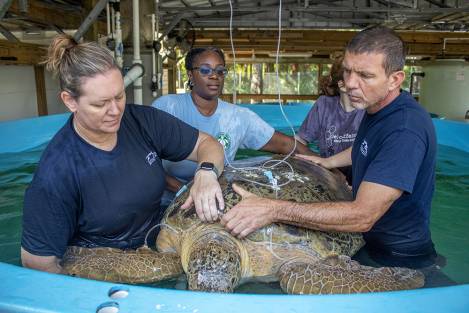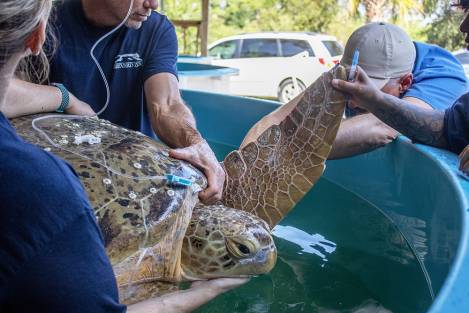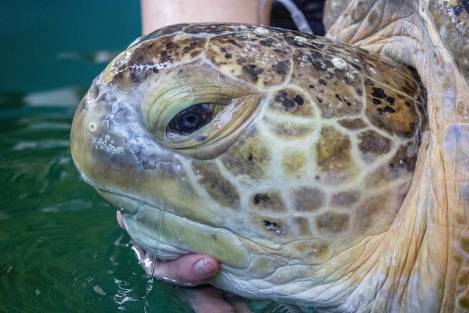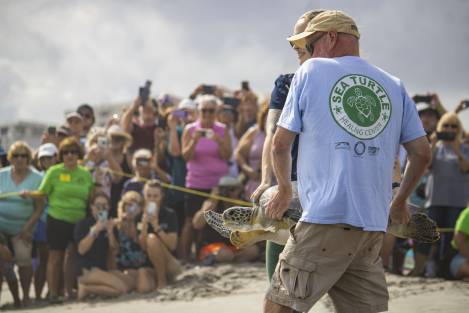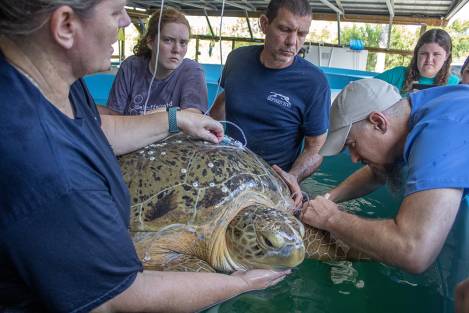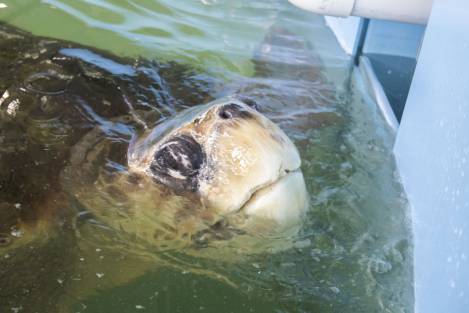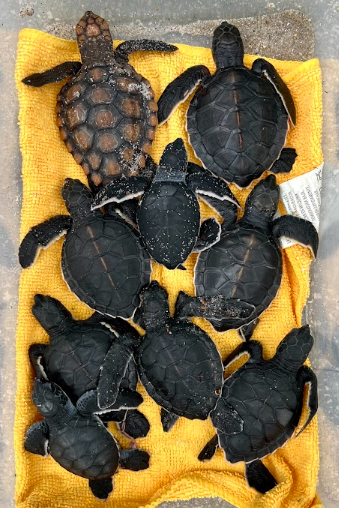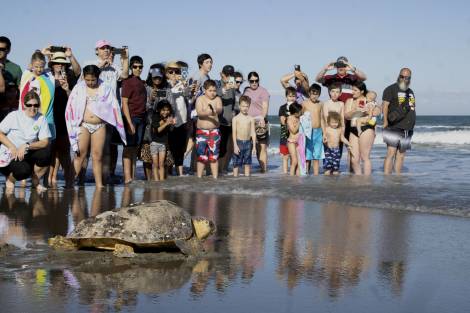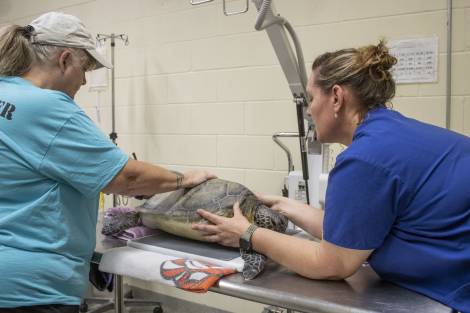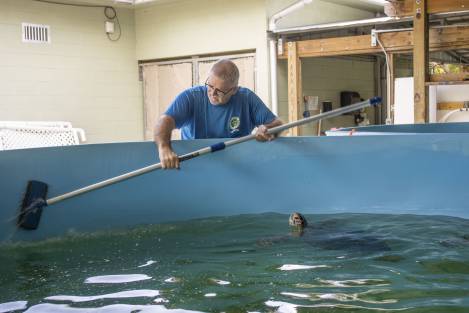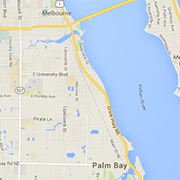Celebrating 10 Years of Healing Sea Turtles
Our Space Coast beaches are among the world’s most important nesting areas for marine turtles. Because of this, a significant number of sick or injured turtles are discovered along the coast or in the Indian River Lagoon each year. That’s where the Sea Turtle Preservation Society (STPS) comes in. Founded in 1984, this local all-volunteer organization rescues stranded or injured turtles throughout our county’s waterways.
Cyndi Stinson is the current stranding and salvage permit holder for the STPS, which means she serves as the central point of contact and manages a team of volunteers spread throughout Brevard County. When a beachgoer spots a stranded or injured turtle, their call makes its way from the Florida Fish and Wildlife Conservation Commission to one of STPS’ “sandals in the sand” volunteers. Last year, the STPS rescued approximately 100 turtles.
“When we are looking for volunteers, we want people who can make a long-term commitment and be flexible,” Stinson said. “You have to be able to go last-minute. We have 25 people spread out over Brevard County. We need people who can get there quickly, seven days a week, from sunup to sundown.”
Volunteers remove the turtles and drive them in their personal vehicles to the Sea Turtle Healing Center, located behind the scenes at Brevard Zoo. The Healing Center includes two separate holding facilities with 14 large tanks, ranging in size from 6 feet to 12 feet in diameter.
“Of course all the animals that come into the healing center have some sort of injury or illness,” said Sea Turtle Program Manager Shanon Gann. “Commonly, we see boat strike injuries, predator attacks, fishing line entanglement or ingestion, hooks — either on the body somewhere or an ingested hook. And we also see what we call general debilitation.”
The Healing Center was also designed to treat patients with the fibropapilloma virus (often referred to as FP), which causes benign tumors to grow inside and outside the turtle’s body. Because FP is highly contagious and thought to be shed in the water, FP-positive and FP-negative turtles must be cared for separately. The Healing Center is one of just a few facilities nationwide that can treat FP-positive turtles.
All of the turtle patients in the Healing Center are cared for by two dedicated zoo staff members and more than 65 volunteers. Volunteers assist with cleaning tanks, feeding turtles, and observing animal behavior.
Nesting Season
Sea turtle nesting season officially begins on our beaches May 1, but not all turtles keep to the official calendar. The first nest on our beaches was recorded in early March this year. In order to keep the turtles safe, beach goers should always give nesting mothers plenty of space.
“They are scared easily,” Stinson said. “Typically nesting happens at night. They swam a thousand miles to get here to nest so we just want to give them space and not disturb them as they dig their nest and lay their eggs.”
The Sea Turtle Preservation Society is permitted to guide groups to safely observe nesting loggerheads. They offer Turtle Walks for the public several nights a week during June and July. Guests must make reservations to participate. While they cannot guarantee a turtle sighting, the turtle walk team has a high success rate because they are located near the Archie Carr National Wildlife Refuge, the site of the second largest loggerhead nesting area in the world.
Nesting turtles and, later, their hatchlings, are extremely sensitive to light pollution. They instinctively move away from the dark dunes toward the light of the moon or the stars reflecting on the ocean. Light pollution may cause nesting mothers or hatchlings to wander in the wrong direction, which makes them dehydrated and burns off energy they don’t have.
But sea turtles are a highly intelligent species.
“Evolutionarily, sea turtles hedge their bets,” Gann said. “Three species commonly nest on our beaches — leatherback, loggerhead, and green, with loggerhead being the most abundant followed by the green, and a few leatherbacks. Mama turtles will lay eggs about every two weeks during the nesting season, so they can deposit 100 eggs in an egg chamber every two weeks. They may nest three to six times during the season. And they lay in different locations.”
Connect
If you see a turtle in distress, call the Sea Turtle Preservation Society at 321-206-0646 or call the Florida Fish and Wildlife Conservation Commission 888-404-FWCC.
Nesting Season Dos and Don’t
- Lights out for turtles May 1 through Oct. 31. Turn off artificial lighting near the beaches at night.
- Give nesting adults and hatchlings their space.
- Properly dispose of food items to decrease predation from wildlife.
- Properly dispose of fishing line, netting, and plastics.
Learn More
Sea Turtle Preservation Society
seaturtlespacecoast.org
Facebook: /SeaTurtlePreservationSociety
Instagram: @seaturtleps
Brevard Zoo (The Healing Center is not open to the public)
brevardzoo.org/conservation/conservation-programs/sea-turtle-healing-center/
Facebook: /BrevardZoo
Instagram: @brevardzoo


